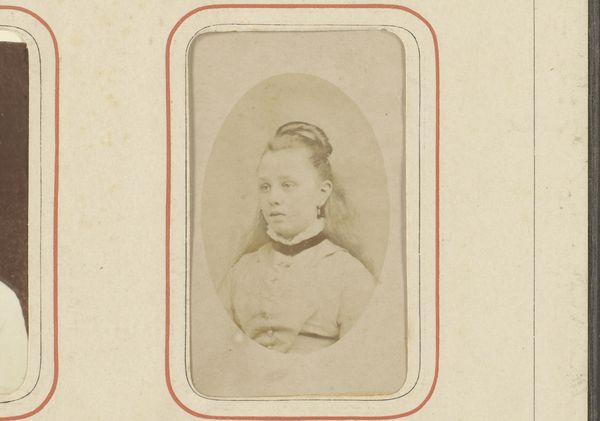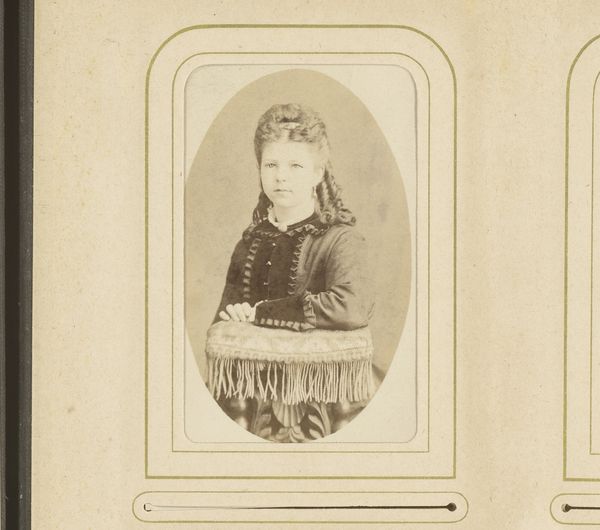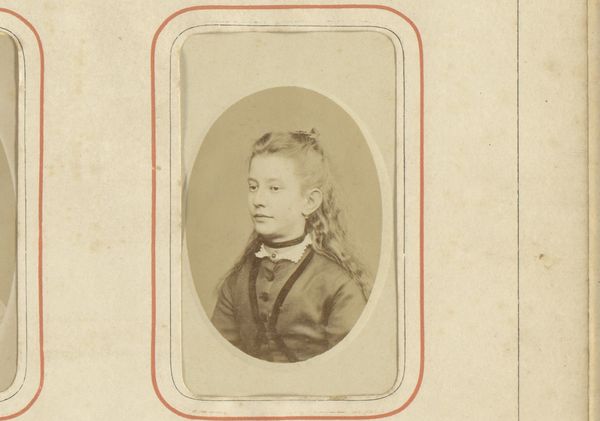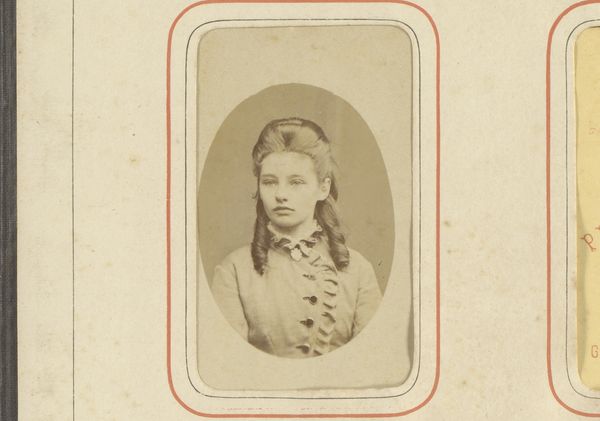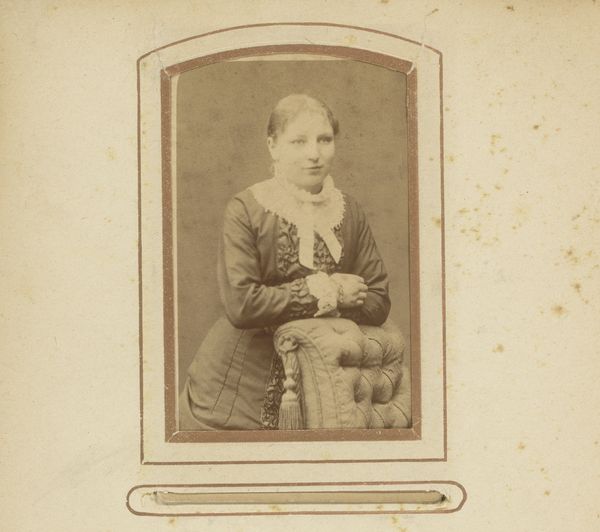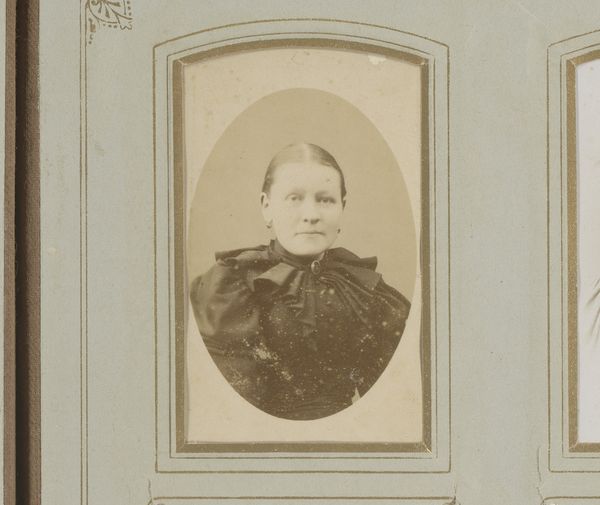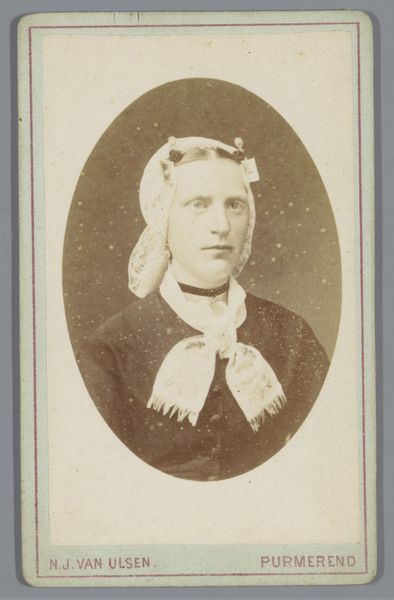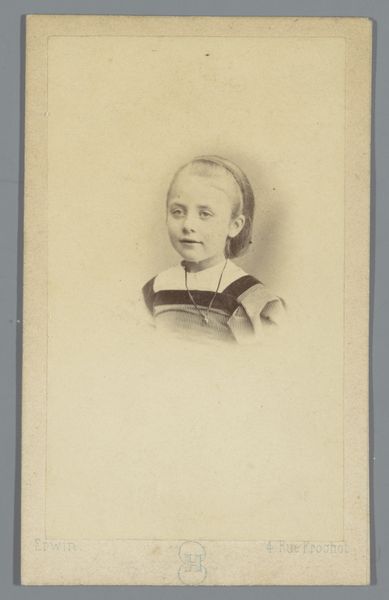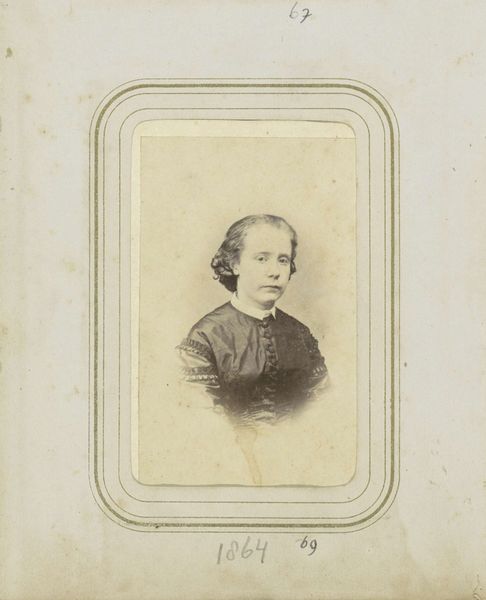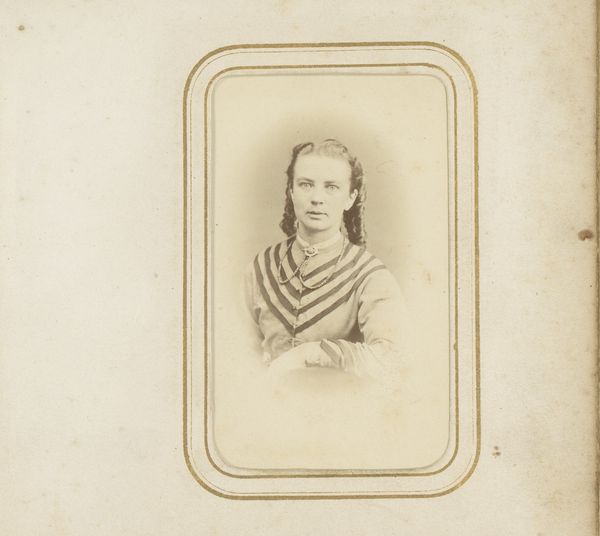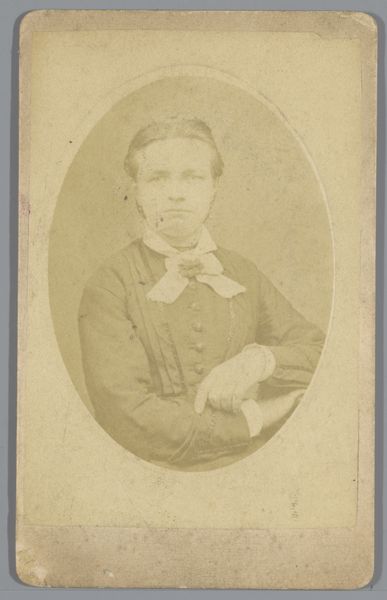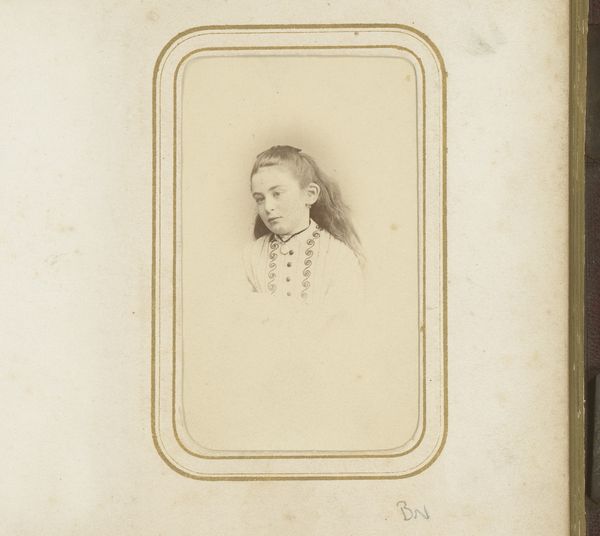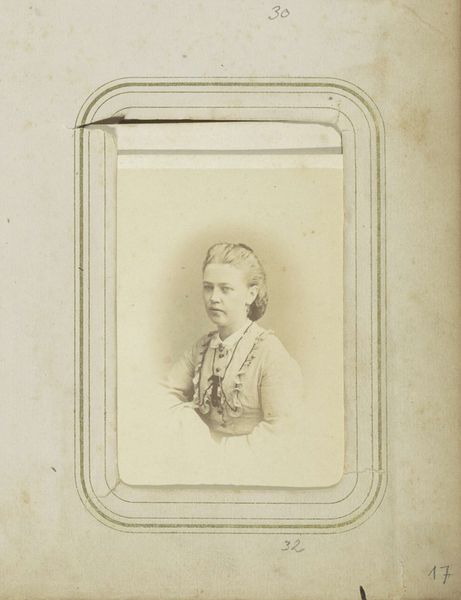
photography
#
portrait
#
photography
#
watercolor
Dimensions: height 101 mm, width 62 mm
Copyright: Rijks Museum: Open Domain
Editor: This is a portrait of an unknown girl, made between 1870 and 1878 by Pieter Vlaanderen, using photography. The soft sepia tones give it a gentle, almost dreamlike quality. What can you tell us about this photograph? Curator: What strikes me immediately is the studio setting, quite deliberate in creating a presentable image, destined, no doubt, for a family album. Photographs such as these offer invaluable glimpses into the rising middle class of the late 19th century, their aspirations, their way of life, their presentation of self to the public eye. Do you notice any particular aspects that hint to a socio-economic status? Editor: Well, the ruffled collar of her dress and even the single earring seem like details meant to signify some degree of wealth or status. Curator: Precisely! While photography became more accessible, portraiture retained a sense of formality. The act of commissioning a portrait photograph was itself a statement. It speaks to how the burgeoning middle class adopted visual languages of the aristocracy to construct their own identities and stake their claims within the social order. We need to think about the relationship between technological advancements and the democratization of art, or, rather, the *illusion* of democratization. To what extent were photographic studios shaping and reinforcing social norms? Editor: That's fascinating! So, it’s not just a simple portrait, but a window into how people wanted to be seen and understood within their society. It is so much more layered now, I appreciate this different approach. Curator: Exactly! By viewing this image as a conscious construct of identity within a particular historical context, we glean more profound insights.
Comments
No comments
Be the first to comment and join the conversation on the ultimate creative platform.
